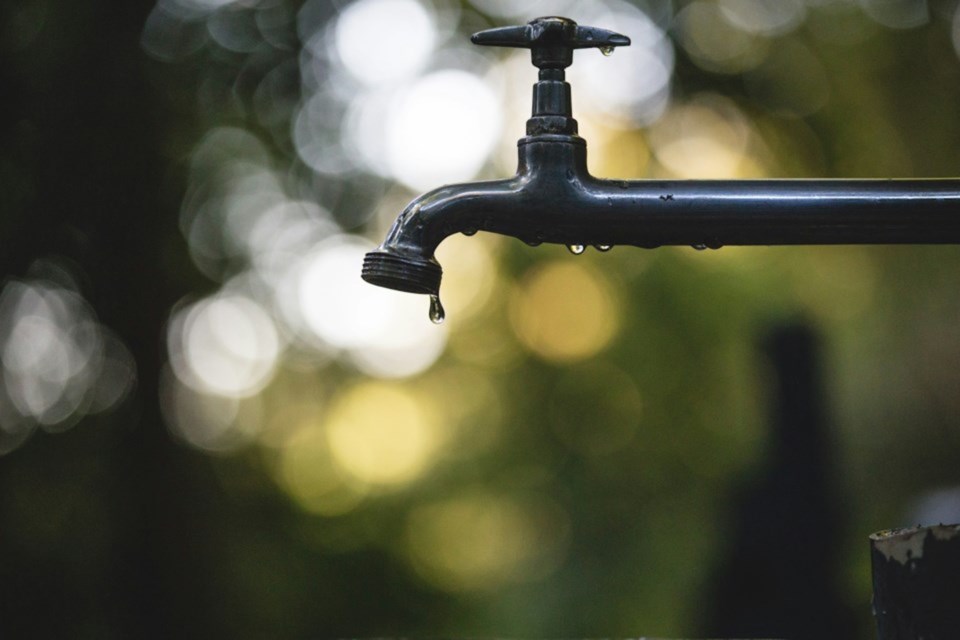St. Albert is now going through less water per capita — and in some years, overall — than it did 25 years ago, when there were 20,000 fewer people and entire neighbourhoods and commercial areas weren't yet developed.
City data show that back in 1998, St. Albertans and the city itself used 5,855 megalitres — or 5.855 billion litres — of water. In 2023, that number dropped to 5,627 megalitres. A megalitre is equal to one million litres.
While that difference may seem small, consider that St. Albert's population hadn't reached 50,000 people as of the 1998 municipal census, whereas the population last year was close to 71,000 according to provincial estimates.
“Our per capita water usage, we estimate, has declined by about 30 per cent,” said Regan Lefebvre, the city's senior manager of utilities.
“We do see increases from year to year depending predominantly on the weather; however, the overall trend has been a very steady decline in overall water usage.”
As seen in the chart accompanying this story, St. Albert reached a peak in water usage in 2002, when residents, businesses, and city workers went through 6,720 megalitres of water. On the other end of the spectrum, 2019 was the lowest year for usage in at least the last quarter-century, at 5,307 megalitres.
Lefebvre said he thinks weather is a major factor influencing overall water usage year to year, but more efficient home fixtures and appliances, changing cultural norms, and water awareness are all at play as well.
“Definitely part of the trend is more efficient water fixtures and appliances,” he said. “Toilets today use less than half the water compared to the toilets that were being installed in the early 1990s when low-flush toilets were introduced.”
“Almost everything is more water efficient; spray faucets on sinks, shower heads, dishwashers use less water than they used to use, and washing machines as well.”
When it comes to changing cultural norms and societal expectations, Lefebvre said he thinks the community is more accepting of less than perfectly green lawns, so residents aren't watering as much, and residents likely aren't letting taps run when brushing their teeth and are more eager to fix a leaky tap.
“There's an increasing acceptance that lawns don't need to be green unless it rains,” he said. “We're also seeing newer homes typically have smaller yards than what they used to, so there's less outdoor [water] usage for these smaller homes.”
Technology has also advanced considerably in the last 25 years, with Lefebvre noting even commercial water uses are more efficient. He specifically noted ClearWater CarWash, which operates a water recycling system to lower its overall water usage.
Not entirely good news
While declining water usage comes with myriad environmental and financial benefits, Lefebvre said lower water usage actually creates some infrastructure issues.
“The less water that's used, the better it is for the environment overall,” he said. “But there's challenges with reduced water usage on the wastewater side.”
“When you have a lower ratio of water in your wastewater, you have slightly slower movement of wastewater within the collection system, so there's potentially an increased risk for sewer blockages.”
In addition, slow-moving sewage means the city has received odour complaints over the years, Lefebvre said.
“Concerns is probably a better word, [but] we suspect that it's a contributing factor,” he said. “We've got more concentration in the wastewater system, so as a result, as we did in the past, we regularly flush our wastewater sewer mains to keep the wastewater moving.”
Another downside of St. Albert using less water that Lefebvre mentioned is the city's costs to maintain water mains, pumphouses, and reservoirs largely remains the same or increases year to year, regardless of how much water is used. This means that although St. Albertans use less water now than they did 20 years ago, the city will have to maintain or increase fee rates to ensure the city has enough funding to complete repairs or replace pieces of the water distribution system.
“We're a non-profit organization, so the less water we sell, our costs remain the same,” he said. “We still have to maintain hydro infrastructure, we have to maintain all of our pipe infrastructure and our reservoirs.”
“With declining water usage it can make things more challenging [as] we end up with a higher cost per cubic metre because of those costs and we still have to charge them out to the customer.”
Although St. Albert's per capita water usage has declined significantly over the past 25 years, it doesn't mean St. Albert has excess water on its hands.
Just before speaking to the Gazette on Monday afternoon, Lefebvre and the City of St. Albert issued an advisory asking residents and businesses to cut back on water usage temporarily as hot weather created a surge in demand and the city's reservoirs struggled to keep up.
As a result, the city immediately stopped all unnecessary water usage in city operations, such as washing buses and fleet vehicles, park watering and pool filling, firefighter training, and more.
READ MORE: City cuts back on water use as demand surges
Last Saturday and Sunday, Lefebvre said, St. Albert went through 25 per cent of its overall water reserves each day, which meant that as of Monday evening St. Albert had just under 40 per cent of its overall reserve.
Lefebvre said that when the reserve is at 100 per cent capacity, the amount of water is equal to about two full days of water for the entire city.




